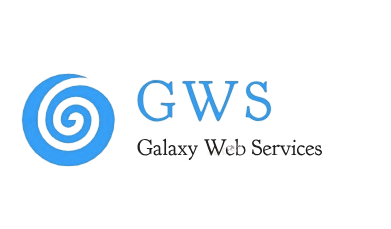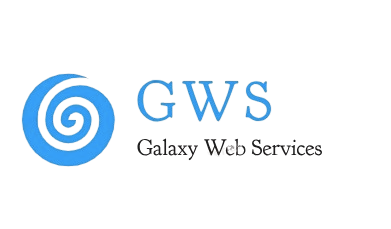
- August 26, 2024
- Post by: Galaxy Web Services
- Post by: No Comments
Website Maintenance Best Practices for Nonprofits and NGOs
A well-maintained website is crucial for nonprofits and NGOs to effectively engage with their audience, drive donations, and promote their mission. However, keeping a website up-to-date, secure, and running smoothly requires ongoing attention and care. This blog will cover the best practices for website maintenance, ensuring that your nonprofit’s online presence remains robust and effective.
Why Website Maintenance is Essential for Nonprofits
Maintaining Credibility and Trust: Your website is often the first point of contact for potential supporters, donors, and volunteers. A well-maintained website reflects professionalism and builds trust, while a neglected website can deter visitors and harm your organization’s credibility.
Ensuring Security and Compliance: Nonprofits often collect sensitive information, such as donor details and payment data. Regular maintenance is essential to protect this data from cyber threats and ensure compliance with privacy regulations.
Enhancing User Experience: A positive user experience is key to keeping visitors engaged with your website. Regular updates and maintenance help ensure that your website remains fast, responsive, and easy to navigate, providing a seamless experience for your users.
Supporting Fundraising Efforts: An outdated or poorly functioning website can hinder your fundraising efforts. Regular maintenance ensures that donation platforms, forms, and calls to action are always functional and optimized for conversions.
Key Website Maintenance Best Practices for NGOs
Regular Content Updates: Keeping your website’s content fresh and relevant is crucial for engaging visitors and improving search engine rankings. Regularly update blog posts, news articles, and event information. Highlight new programs, success stories, and upcoming events to keep your audience informed and connected.
Software and Plugin Updates: Outdated software and plugins are a major security risk. Ensure that your website’s content management system (CMS), themes, and plugins are always up-to-date with the latest security patches and features. Regular updates help protect your site from vulnerabilities and enhance its functionality.
Regular Backups: Routine backups are essential to safeguard your website’s data. Implement a regular backup schedule to ensure that you can quickly restore your site in case of a crash, hack, or other issues. Store backups securely, and test the restoration process periodically to ensure everything works correctly.
Security Monitoring: Security should be a top priority for nonprofits. Implement security measures such as SSL certificates, firewalls, and malware scanners. Regularly monitor your website for potential threats, including hacking attempts, malware, and suspicious activity. Ensure that user data is encrypted and that your website complies with data protection regulations.
Performance Optimization: A slow-loading website can frustrate users and lead to higher bounce rates. Regularly test your website’s performance using tools like Google PageSpeed Insights. Optimize images, minimize CSS and JavaScript, and leverage browser caching to improve load times. Consider using a content delivery network (CDN) to enhance performance for users in different geographic locations.
Check for Broken Links: Broken links can negatively impact both user experience and SEO. Regularly scan your website for broken links and fix them promptly. Use tools like Google Search Console or online link checkers to identify and resolve these issues.
Form and Functionality Testing: Ensure that all forms on your website, such as contact forms, donation forms, and sign-up forms, are functioning correctly. Periodically test these forms to verify that submissions are being processed properly and that users receive the expected responses or confirmations.
SEO Monitoring and Updates: Search engine optimization (SEO) is an ongoing process. Regularly review your website’s SEO performance and make updates as needed. This includes optimizing meta tags, updating keywords, refreshing content, and ensuring that your site is mobile-friendly. Keep track of SEO trends and adjust your strategy accordingly.
Accessibility Compliance: Ensure that your website is accessible to all users, including those with disabilities. Regularly review your site for compliance with accessibility standards like WCAG (Web Content Accessibility Guidelines). This includes providing alt text for images, ensuring keyboard navigation, and using accessible forms and content structures.
Practical Tips for Streamlining Website Maintenance
Create a Maintenance Schedule: Establish a regular maintenance schedule that covers all aspects of your website, from content updates to security checks. Assign specific tasks to team members or consider outsourcing to a professional website maintenance service if resources are limited.
Use Automation Tools: Leverage automation tools to streamline routine maintenance tasks. For example, automated backups, security scans, and performance monitoring can save time and reduce the risk of human error.
Document Processes and Protocols: Document your website maintenance processes and protocols to ensure consistency and efficiency. This documentation can serve as a valuable resource for your team and ensure that everyone is on the same page regarding maintenance responsibilities.
Regularly Review Analytics: Keep track of your website’s performance by regularly reviewing analytics. Look for trends in traffic, bounce rates, and user engagement. Use this data to identify areas for improvement and make data-driven decisions about website updates and enhancements.
Real-Life Examples of Effective NGO Website Maintenance
The American Red Cross: The American Red Cross regularly updates its website with the latest news, disaster relief efforts, and donation opportunities. Their commitment to maintaining a secure, user-friendly site ensures that they can effectively mobilize support when it matters most.
UNICEF: UNICEF’s website is a model of accessibility and usability. The site is regularly updated with new content, and the organization prioritizes security and performance to ensure a smooth experience for users worldwide.
World Wildlife Fund (WWF): WWF’s website maintenance practices include frequent content updates, robust security measures, and regular performance optimizations. Their site effectively engages supporters with interactive features, donation platforms, and educational resources.
Effective website maintenance is crucial for nonprofits and NGOs to maintain credibility, security, and engagement. By following these best practices, your organization can ensure that its website remains a powerful tool for outreach, fundraising, and mission-driven activities. Regular updates, security checks, and performance optimizations are not just technical tasks—they are essential components of a successful nonprofit strategy. Start implementing these practices today to keep your NGO’s website running smoothly and effectively.








